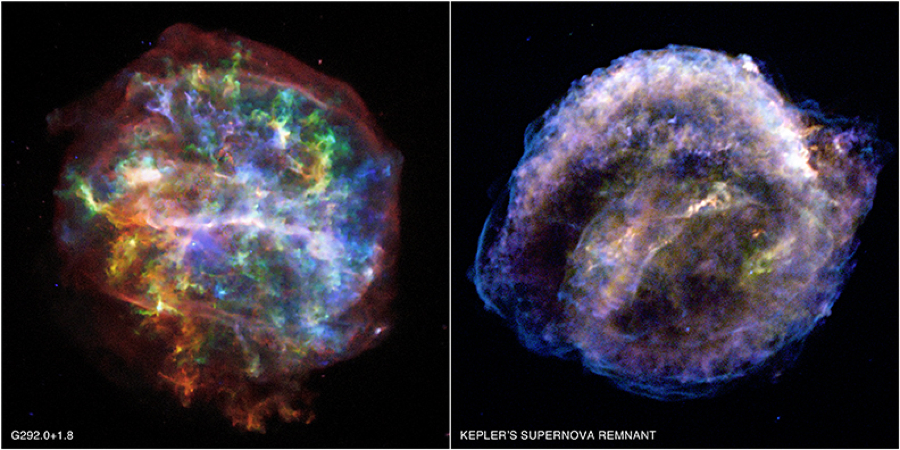
 Credit: NASA/CXC/UCSC/L. Lopez et al.
Credit: NASA/CXC/UCSC/L. Lopez et al.
The Shape of Things that Were
What's the difference between the two dead stars above? They both look like bright glowing balls of X-ray emitting gas, enormous nebulae produced by the explosion of stars that reached the end of their lives. One produced by the collapse of the iron core of a massive star, the other produced by the deflagration of the burnt-out carbon-oxygen core of a low mass star. Which is which? Hard to tell, but careful analysis of X-ray images obtained by the Chandra X-ray Observatory of 17 supernova remnants in the Milky Way and the Large Magellanic Cloud (two of which are shown above), revealed subtle but distinct differences between the two types of supernovae. In the case of core collapse supernovae (like G292.0+1.8 on the left), the remnant is significantly more asymmetric than the other type (like the Kepler Supernova Remnant on the right). There was one oddball in the study - a remnant that had the chemical abundances of a deflagration, but the shape of a core-collapse.
Published: December 21, 2009
<
HEA Dictionary ● Archive
● Search HEAPOW
● Other Languages
● HEAPOW on Facebook
● Download all Images
● Education ● HEAD
>

Each week the HEASARC
brings you new, exciting and beautiful images from X-ray and Gamma ray
astronomy. Check back each week and be sure to check out the HEAPOW archive!
Page Author: Dr. Michael F. Corcoran
Last modified Monday, 26-Feb-2024 17:47:28 EST


